“Teams that couldn’t adjust defensively and show patience and discipline to withstand those spells [of possession from opponents] found themselves chasing the game. France were without question the best at this…”
“There was […] a return to what we would consider ‘outdated’ centre forwards like Mario Mandzukic, Olivier Giroud and, somewhat, Edinson Cavani…”
“With VAR in place in 2006, England’s 83rd minute opener by Peter Crouch against our Soca Warriors would have been disallowed…”
“We can look at smaller programmes like those in Morocco, Senegal, Egypt, Iceland and even Croatia, to see what can be accomplished with administrators who are clear-eyed and void of corruption…”
So what should we take away from the Russia 2018 World Cup?
Canada’s HFX Wanderers head coach and ex-Soca Warriors boss Stephen Hart, ESPN analyst and former World Cup 2006 and England Premier League goalkeeper Shaka Hislop, ex-Trinidad and Tobago technical director and US-based coach Kendall Walkes, and Fatima College and QPCC coach Wayne Sheppard share their views with Wired868:
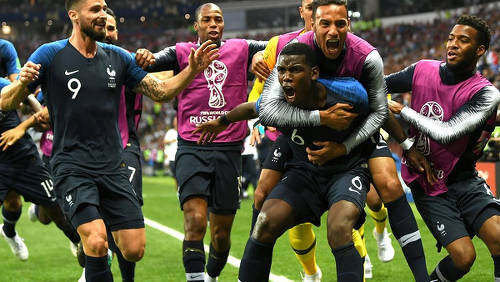
(Copyright FIFA/Getty)
Wired868: What stood out for you about the Russia 2018 World Cup?
Kendall Walkes: On a personal level, the greatest fascination for me from this World Cup was seeing the game at a crossroad with the blurring lines between older traditions and modern ways of approaching soccer.
The disappearing foam, the advent and use of VAR, the off/on protection of star players (more on that later!) are all modern ways.
[…] The world is now getting introduced to the electronic eye as an extension of the team of officials, which is actually commonplace in American sport. How the soccer world handles that will have a big impact on the game going forward, and it made a huge difference at this World Cup.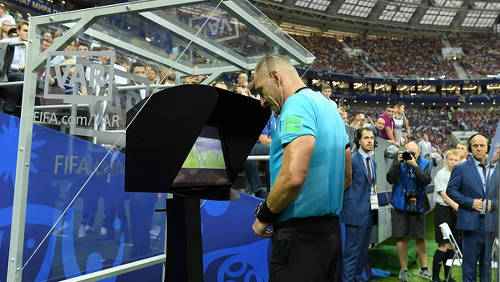
(Copyright FIFA/Getty)
Stephen Hart: Physically, teams were very well prepared; this was evident. Every team showed how the collective was important for success, even without world class talent. Even Saudi Arabia, who had a poor opening, bounced back with a balanced performance. You could see every player working for each other and willing to do the little extra.
What was also evident was the defending in wide areas. The final four teams all had fullbacks who could defend first and foremost.
Almost every team also had their top players playing in Europe. I think this was important. Many teams had players who were involved in the European Champions League at some stage and this contributes significantly to the team’s collective experience.
From a sentimental perspective, I love when teams have a clear identity of play. However, globalisation in coaching does take away from this.
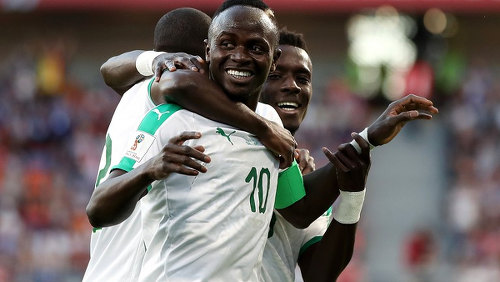
(Copyright FIFA/Getty)
Wayne Sheppard: One of the main things that stood out for me was the number of completed corners and indirect set plays. And when I say completed I mean that resulted with a shot on goal.
I think that the introduction of VAR had a big influence on this. Teams have, in the recent past, gone away from zonal marking schemes at corners and set pieces, and have instead adopted pure man to man ones, simply because defenders were by and large getting away with wrestling attackers and denying them a chance to attack the balls delivered into the area.
The introduction of the VAR has—by the sheer weight of goals and shots—put paid to that in this World Cup. This sword cuts both ways as infringements by attacking players have also been spotted.
With VAR in place in 2006, England’s 83rd minute opener by Peter Crouch against our Soca Warriors would have been disallowed—and who knows how that game and the group would have progressed from there!
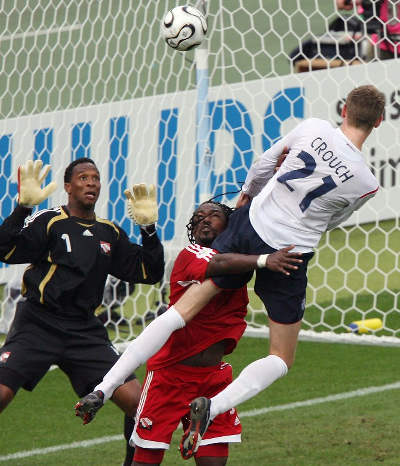
(Copyright AFP 2018)
Wired868: What were the prevailing tactical trends—and the pros and cons of them?
Shaka Hislop: The standout trend from the 2018 World Cup was the number of teams that used attack and pressing the ball high up the field as the foundation of their play.
I was expecting that teams would sit back and be cautious, particularly in the early rounds when it seems they are often more concerned with not losing than with winning. This tournament was different. Maybe it was Russia’s 5-0 opening day rout of Saudi Arabia that set the trend; but, whichever way, it made for upsets and an outstanding tournament.
The pros for such an approach were evident all tournament long. The cons were that regardless of the stage—and almost regardless of the opposition—your opponent will have periods in the game when they dominate. Teams that couldn’t adjust defensively and show patience and discipline to withstand those spells found themselves chasing the game. France were without question the best at this.
On their path to World Cup glory, neither Lionel Messi (Argentina), Luis Suarez (Uruguay), Eden Hazard, Romelu Lukaku (both Belgium), Luka Modric nor Ivan Rakitic (both Croatia) were able to have much impact in their respective games against [France]. That is some list!
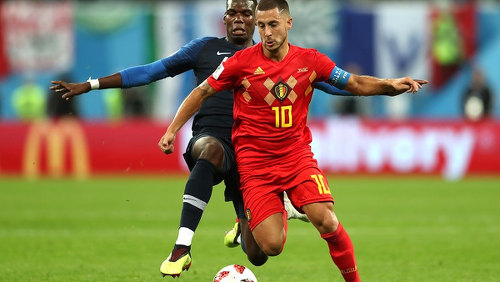
(Copyright FIFA/Getty)
Walkes: There was not really a progressive domineering style of play like we saw in the last two World Cups. Spain’s early elimination raised questions as to the continuing value of the ‘tiki taka’ style, as their hundreds of passes did not give them much penetration and was not as effective as in the past.
I think the world is again searching for a new soccer blueprint or style. In this World Cup, the saying ‘to the victor’ doesn’t end with ‘goes the spoils.’ I don’t think the champions gave us something that everyone will be trying to adopt like they did after Spain’s 2010 triumph and Germany in 2014.
I think France’s star player was N’Golo Kante. While all eyes were on Paul Pogba, Kylian Mbappé and Antoine Griezmann, you could tell that Kante was the one who coach Didier Deschamps heavily relied on.
He was the cog in the wheel for the French team, who did all the dirty work of destroying the attacks of opponents. A yellow in the final defused him a bit but he was the man of steel—à la Patrick Vieira and others of that ilk—up until then.
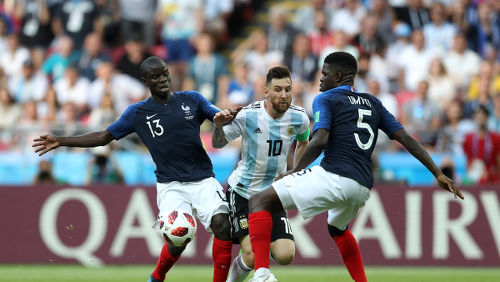
(Copyright FIFA/Getty)
Hart: It is funny that some very attractive teams did not get far at this World Cup due to poor starts, or just plain bad luck. Morocco, Peru and Senegal were all very exciting and imaginative.
In the end, this tournament was football without the ball. France were the most efficient at it—patiently waiting for errors and to make swift counter attacks. It was defensive play at its finest.
Interestingly, Paul Pogba did not score or assist up to the final, Olivier Giroud did not score a single goal and Antoine Griezmann only scored on a set play and penalties. Let’s hope these sort of tactics are restricted to tournament play only.
There was also a return to what we would consider ‘outdated’ centre forwards like Mario Mandzukic, Giroud and, somewhat, Edinson Cavani. They worked tirelessly, pinned back their opposing central defenders, were menaces in the air, and created space for wide players to play one v one and run the channels.
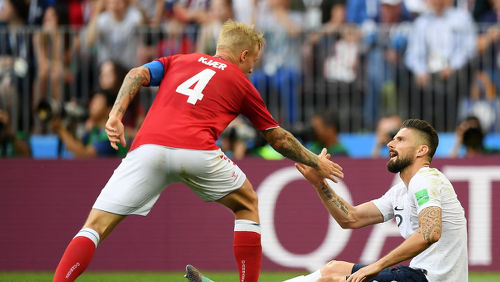
(Copyright FIFA/Getty)
I think we saw interesting variation in tactical play from some teams that had the ability to change shape in mid-game. An example would be the Mexico players, who alternated between man marking and pressing. Russia did it too, especially with pressing in their own half. Croatia were able to interchange positions and roles in midfield at will.
We also saw players who were willing to play two ways—back and forward—without question, especially in wide areas of the pitch, and good efficiency in set players. I think VAR contributed to the overall numbers in that regard.
On the negative side, we saw that possession teams that did not have the ability to penetrate in wide positions could not breakdown deep block defending sides like Iran and Iceland.
Worse, there was too much diving to con the referee and players faking injuries on corners and free kicks to prevent counterattacks. There was a lot of tactical fouling to prevent counters too.
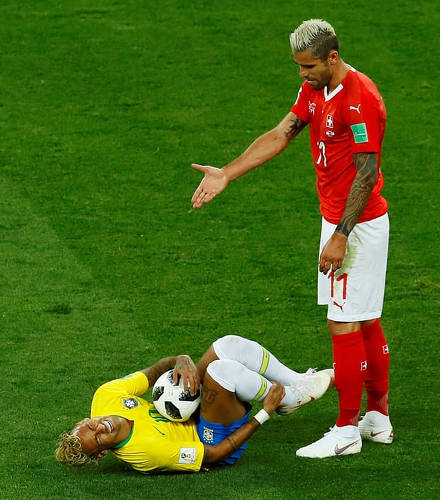
(Copyright Jason Cairnduff/Reuters)
Sheppard: One of the things that struck me tactically about this World Cup was the desire of most teams to play quickly through lines of pressure. There was a lot more verticality. This was most evident in the Germany/Mexico game, where Mexico would play quickly forward as soon as they came into possession and caused Germany no end of problems. France, Belgium, Uruguay, Portugal and even England—to name a few—adopted this tactic at some point in time.
The winning teams of the last two World Cups were built around possession, probing for weaknesses and lapses in concentration by the opposing defences. This time around, the teams that put a priority on possession were put to the sword. Germany, Spain and Argentina—the top three teams in terms of possession in the group stage games—all failed to make it to the quarterfinal round.
But if I had to point to one tactical trend in this World Cup, it would be the flexibility of the teams. Most teams used a number of tactics based on who they were playing and what they saw as their best means to success.
France, on taking the lead, would then drop back in a low to medium defensive block—also commonly known as defending on line three (low block) or line two (medium block). This was done to invite opponents to push higher up the pitch and expose space behind their backs, so a speed merchant like Kylian Mbappé and a clinical, intelligent finisher like Griezmann could catch them on the counter.
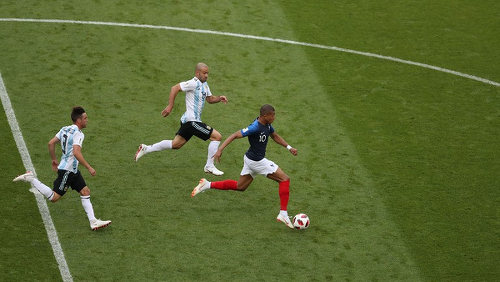
(Copyright FIFA/Getty)
They rotated between those two tactics throughout the tournament, according to the situation of the match.
These are just a few of the myriad of changes made from game to game—and sometimes within a game—at the World Cup. The number of tactical changes seen shows the intelligence and maturity of the players, who have to understand and execute the coach’s instructions. The group stage is something like three games in seven days, so for coaches to shuttle through so many variations demonstrates the quality of these players.
Teams constantly trying to outmanoeuvre each other, like a moving game of chess, gave us more attacking football, as compared to the 1990 and even 2010 World Cups, which were more attritional with tactics employed to suffocate.
The downside to all the tactical tinkering was that, spoilt for choice, coaches can easily get their tactics wrong on any given day; or, as in the case of Jorge Sampaoli and Argentina, have tactics that does not suit the personnel at their disposal.
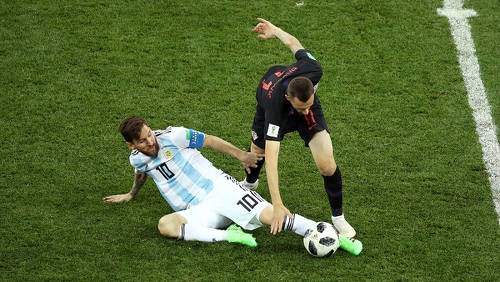
(Copyright FIFA)
Wired868: Did any individual talent catch your eye and why?
Hart: I think extensive team analysis and scouting, players’ experience of each other—since so many of them play in Europe—and attention to detail planning, made it difficult for the best individuals to really dominate games.
But individual talent was still very evident. Many teams had fantastic goalkeepers; like Jordan Pickford (England), Thibaut Courtois (Belgium), Keylor Navas (Costa Rica), Guillermo Ochoa (Mexico), Hugo Lloris (France), Kasper Schmeichel (Denmark) and Danijel Subasic (Croatia) to name a few.
Of the outfield players, what struck me was how they brought their skills in to the collective effort. Mbappé (France), Ivan Perisic, Modric (both Croatia), Hirving Lozano (Mexico), Ahmed Musa (Nigeria), Kevin De Bruyne (Belgium), Denis Cheryshev (Russia) and Cavani (Uruguay) all had moments of brilliance; but their work ethic was impressive.
Hislop: A lot of talent caught the eye. Because so many teams played with styles that mirrored how big European clubs now play, I expect there’ll be a lot more movement of players this summer because of good World Cup performances—whereas recruiting at big international tournaments had previously been trending downward.
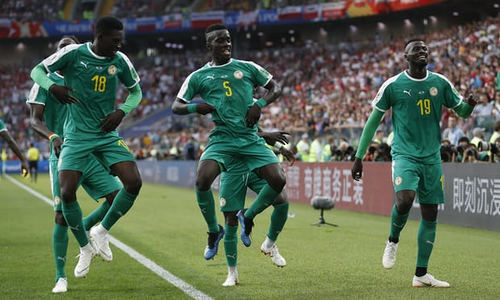
(Copyright Eduardo Verdugo/AP)
Sheppard: The obvious answer here is Kylian Mbappé. He has a maturity that belies his age and understands his strengths and his role. The solo run that led to the penalty decision against Argentina was the standout individual play of the tournament; but there was so much more to admire about his world cup. He isn’t a one trick pony and his skill on the ball will still allow him to navigate defences that are set deeper to deny him space to run into behind their backs. I’m very interested to see where his career goes from here.
But other than him I went for players that impressed but were not already household names—at least not to me.
Lucas Torreira started on the bench for Uruguay. But, by the final group game, was starting at the base of what looked like a diamond midfield. It was plain to see that this guy could do everything—except perhaps mark a Lukaku or Fellaini at set pieces, since he stands at only five foot six. Fantastic 20 yard pace; good passing range and a keen eye for the interception of passes. What really stood out for me was his use of dribbling skill only when required to get out of tight spots, and his use of short passes to move opponents into bad defensive positions that then allowed him to play forward.
It was no surprise to me to read that big clubs are after him after his world cup exploits.
Noureddine Amrabat (Morocco), Andre Carillo (Peru), Ahmed Musa (Nigeria), Salif Sane (Senegal), Hirving Lozano (Mexico) and Juan Quintero (Colombia) were also among my lesser known standouts.
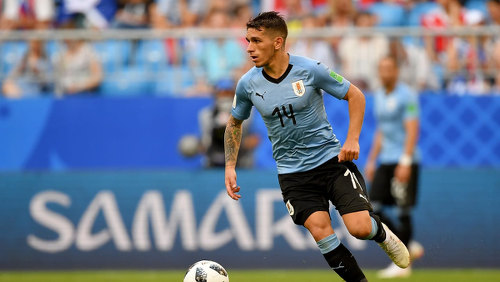
(Copyright FIFA/Getty)
Wired868: What lessons are there for Trinidad and Tobago from the World Cup and which teams best illustrated these?
Walkes: Invest in youth! I think the World Cup showed that youthful energy and skill remains a hit.
Also we can look at smaller programmes like those in Morocco, Senegal, Egypt, Iceland and even Croatia, to see what can be accomplished with administrators who are clear-eyed and void of corruption. Look at how many players are natural-born from those countries and watch the leagues in which they ply their trade.
FIFA qualification bonuses are short-term gains that can greatly enhance youth development and domestic leagues and facility upgrades. Many Mexico and Costa Rica players are now in the MLS and we can use that as a cost-effective investment too. We should be trying to get some of our young players into such leagues to better develop them.
I still believe that Trinidad and Tobago’s best World Cup campaigns came when our core group of players came from the same foreign leagues, such as the NASL during the 1970s and the English leagues in 2006. That’s arguably the blueprint of almost all of the successful World Cup teams.
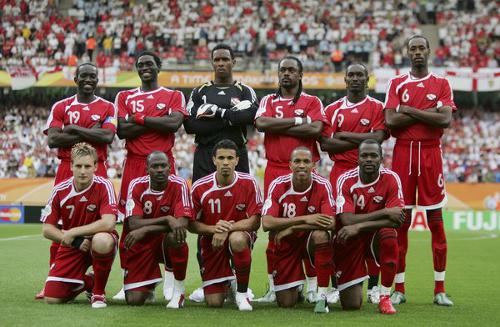
(Courtesy 90soccer.com)
Hislop: There are a number of lessons that Trinidad and Tobago can take from this World Cup. You can start with the performances of tiny Iceland, which demonstrated how a clear organisational structure and inclusive approach to the game can reap huge benefits.
But, most importantly, I think the need for a national ‘football identity’ that reflects and respects our own footballing history is a must. We cannot hope to emulate anyone else. We can’t simply aim to copy-cat and expect to reap any kind of long term reward.
Another valuable lesson we must take away from this World Cup is that a malfunctioning FA is detrimental to the team, on and off the park—even if you have the greatest player of a generation. Just ask Argentina.
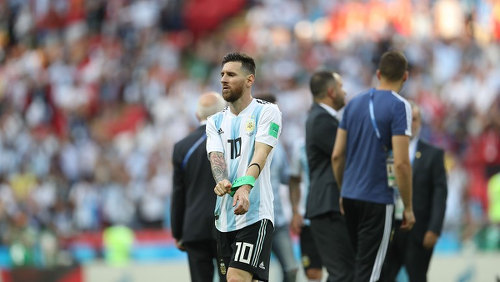
(Copyright FIFA/Getty)
Sheppard: Iceland is the smallest nation to ever qualify for the World Cup, with a population in the vicinity of 330,000. Although they didn’t advance past the group stage, they were very competitive against established footballing powers and, more importantly, have now qualified for back to back major tournaments. To better understand what they did, let us place the Icelandic experience up against what our local football experts are saying.
Fallacy number one: We need a professional league as a means for our players to develop. That it is essential and without it our football will fail.
Well, Iceland has NO professional league. They have a semi pro league. Just as in Trinidad, their better players go overseas to play professionally.
Fallacy number two: Best way for our young players to develop is to have them playing in competitions as much as 10 months out of the year.
Iceland’s competitive season runs from May to September. Indoor centres have been built to facilitate training and strength work in the off-season.
So how did Iceland—a nation with a combined total of 22,000 men and women footballers—succeed without doing the things that our “experts” say are mandatory? Well for one, they invested in their coaches.
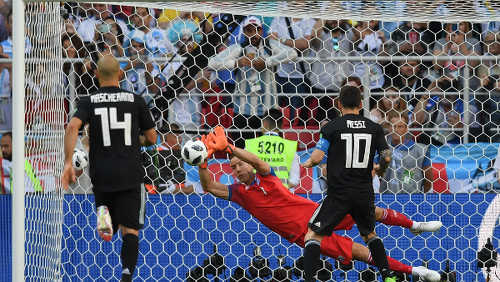
(Copyright FIFA/Getty)
The KSI (Icelandic equivalent of our TTFA) looked around and decided the best way to improve the standard of their football was to elevate the standard of their coaching. They seemed to think that better educated coaches eventually translates to a bigger pool of well-trained players to choose from.
It was a ‘rising tide floats all ships’ approach. Logical isn’t it?
The TTFA has decided to go the other way and invest in an elite program. I have had the benefit of seeing that elite team—aka the National Under-14 Team—play on consecutive weekends and I have been totally impressed by the talent on display from all 30 of the players. Messieurs Stuart Charles-Fevrier, Leonson Lewis, Wesley Webb and the rest of the technical staff have done a fine job, no doubt.
But is this the correct approach for sustainable success? After all, that is what we should be aspiring to—isn’t it?
How does developing 30 boys raise the standard of our country? Why not invest in coaches like the aforementioned staff and others like Angus Eve, Shawn Cooper and Clayton Morris to name a few?
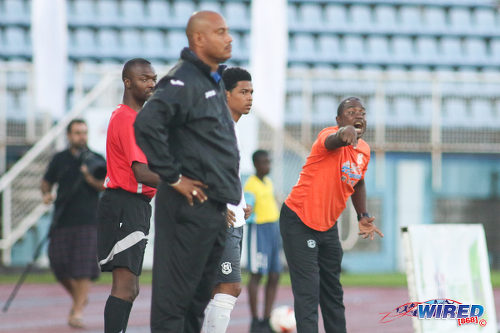
(Courtesy Chevaughn Christopher/Wired868)
Why not leverage on the knowledge of folks like Hayden Martin and Trendsetter Hawks’ Anthony “Dada” Wickham, in conjunction with TTFA technical director Anton Corneal’s national coaching syllabus?
We need a common manuscript for coaches to follow when coaching the country’s youth; so that Trinidad and Tobago, with a population of almost five times that of Iceland’s, can consistently vie for a World Cup spot.
A rising tide raises all ships—that are seaworthy.
Wired868: Any other points you would like to make about the World Cup?
Walkes: I think FIFA still has to let go of the old ways, which we saw in the treatment of Neymar. Yes, Neymar embellishes; however, almost 90% of the replays show that he was actually fouled and it was reminiscent of what superstars of yesteryear like Diego Maradona and Pelé dealt with.
Compare the penalties awarded to France and England in the first round with what happened to Neymar in Brazil’s elimination game against Belgium. The referee owes the world an explanation about why he did not call one from three possible penalty kick situations in that quarterfinal.
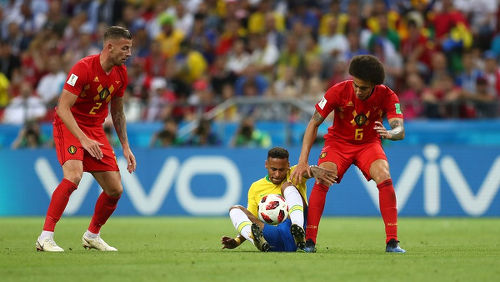
(Copyright FIFA/Getty)
I saw the lack of protection for Neymar as contrary to modern day officiating, which is designed to protect superstars.
I also feel FIFA needs to understand the importance of keeping its best players on the field. The paying public wants to see the best players perform and it is FIFA’s responsibility to rid itself of obsolete rules like two accumulated cards resulting in game suspensions. That’s rubbish!!!
FIFA should recognise the importance of the viewing public and the best players should be given every opportunity to play and not be legislated off the field.
Suspension for one caution in two separate games is utter nonsense! Maybe you can justify that in group games but certainly not the elimination rounds.
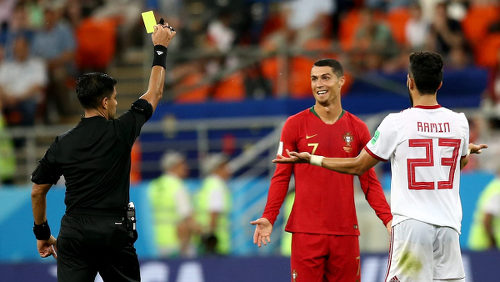
(Copyright FIFA)
Sheppard: This World Cup was a UEFA bashing of all other continents and footballing zones. No CONMEBOL team made it to the semis, no CAF team made it out of the group stage and Japan and Mexico were the only teams from Asia and CONCACAF to get to the Round of 16.
In the past, a non-European team failing to win in Europe could be blamed on climate, time difference, etc. But in the modern game where the world has gotten smaller and most players now call Europe home, it was surprising to see the failure of non-
UEFA teams to advance deeper in the competition. Reason for this? Your guess is as good as mine.
Hart: We will hear a lot about the domination of European teams. Brazil have only themselves to blame for their loss, while Uruguay without Cavani are a much weaker opponent. But, in 2014, the balance between South America and Europe was equal, so I would not read too much into this.
Tournament football is very difficult and unpredictable; and even the best coaches fail at times to guarantee consistency.
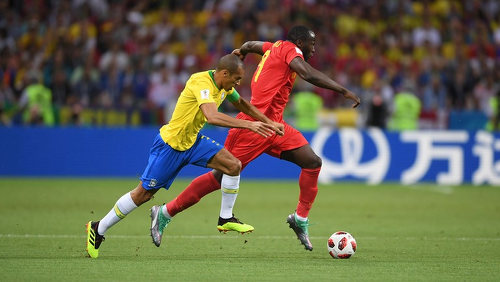
(Copyright FIFA/Getty)
WC 98 Winners France were out of WC 2002 Group stage.
WC 02 Winners Brazil out in the quarter finals of WC 2006.
WC 06 Winners Italy out in the group stage of WC 2010.
WC 10 Winners Spain out in the group stage of WC 2014.
WC 14 Winners Germany out in the group stage of WC 2018.
And, in the aforementioned scenarios, Italy, Spain and Germany all still had their World Cup winning coaches at the helm.
Football has no truth. Many of the stats for 2018 were mind boggling, with the exception of who scored more goals in the game. Possession percent, shots on goal, shots on target, corners; none were conclusive.
I don’t necessarily think going to a 48 team World Cup is the best thing for the game. However, it remains to be seen how that will work.
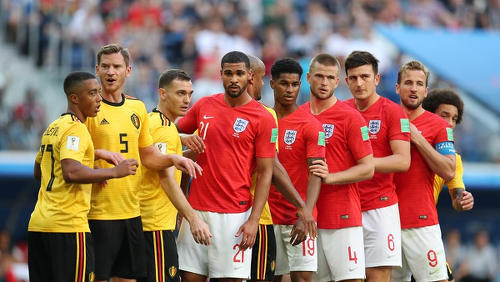
(Copyright FIFA/Getty)
The projected format of 16 groups with three nations and only the group winners moving on—in my humble opinion—does not sound very appetising; then again that is just me.
Whether it is 32 or 48 teams, what is evident is that much of a national team’s success is down to its foundation. You need a strong Federation that works closely with all aspects of its football and is supportive in the World Cup campaign, with detailed consistent planning over a period of time.
For small nations, getting this right could take about 10 years.
 Wired868 Wired868 for smart sport news and opinion
Wired868 Wired868 for smart sport news and opinion

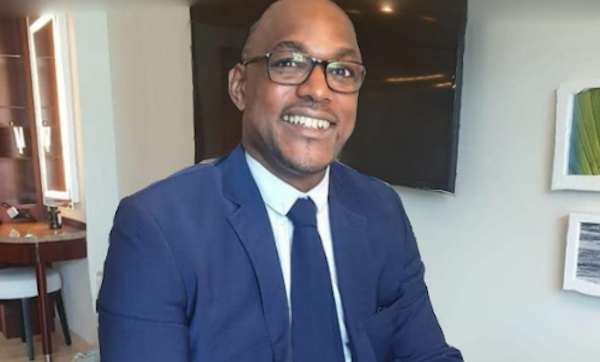



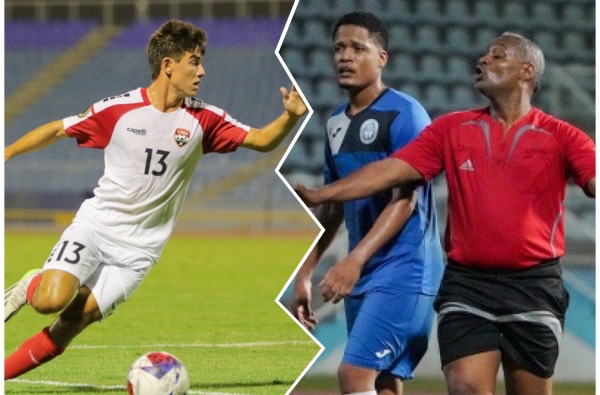
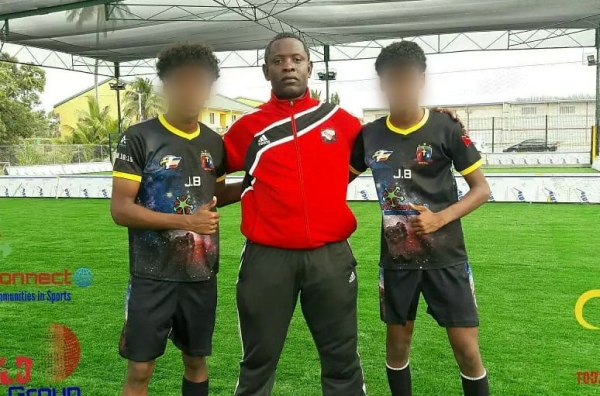


I enjoyed the 2018 World Cup. There wasn’t really that much to complain about except VAR, which creates more problems than it solves…
https://www.facebook.com/TrevorNoah/videos/212239442809162/
Local coaches in Trinidad do not have what is needed to take this country to the World stage, they can`t even train small goal players, to get to the World Cup and score a goal you have got to work hard, have discipline and really care about playing in the World Cup which our footballer do not .
The first coach to take Trinidad and Tobago to a Fifa World Cup was Bertille St Clair at U-21 level.
Since then Trinidad and Tobago qualified for three more World Cups including one at senior level.
Each team included local coaches.
True, but how far have these teams gotten ? have they been able to build on the qualifications, in terms of getting a core of young men who can be trained to move from U-16 to U-21 to the World Cup that`s a Golden generation. Trinidad has never seen one…We should have a youth system that works at producing such players, local coaches should insist we build one or import a coach like Belgium did, that was the only way we made the World Cup in the first place.
Natasha that’s true but that is more about the administration than the coaches.
Coaches want more time with players and tours and so on. Now the coach may not be good enough but we will never know unless he gets the tools that give him a fair chance of success.
In 2006, we had Yorke and Ince alone from that 1991 World Youth Cup team which should have given us a golden generation.
Players like Jerren Nixon, Angus Eve, Dean Pacheco, Richard Theodore, Anthony Sherwood and Kerwin Emmanuel all came from that side and they were really talented.
But again where is the building, Admin my foot, coaches have voices if no one stands up and says something we will continue to be a country of Bandwagonist never feeling the pride of see OUR team score or heaven for bid win a game in the world cup. And continue to watch people we used to beat like Panama and Costa Rica inspire.A few years ago France sent out its Coaches to Africa ,now they are have a second star, We have to send our coaches to get training, we may not get a star but they may inspire the next generation of players.
i agree that coach education is important and that stakeholders should speak up more. No problem with that.
One can only go as far as one’s knowledge extends. T&T’ s football coaches and analysts will have seen the very things everybody has seen in this World Cup. What I saw in this competition was a very poor standard of football. If that was the best on offer, then I am sure I can teach, train, coach and prepare a T&T team to win the next World Cup.
Fitzroy John the VAR was introduced to improved decisions, and it certainly has done so.Just remember a picture speaks a thousands words.
Tony Estrada The world cup was held on planet earth with millions of viewers.
Two black men scored goals for France contributing to France victory.
Facts are facts it can’t go away.
this whole world cup would of been different if that VAR foolishness was not interdruce they still have inconsistency in it!
Again france all the way Allez allez
Wired apparently watching football in a different zone steupps
Based on the assessments of Shaka Hislop, Stephen Hart, Kendall Walkes and Wayne Sheppard?
Well thanks for that illuminating and well thought out comment…
Lets just not mention Giroud lol…dont care how old school his style is, he was UTTER rubbish on a winning team
7 games 0 shots on target = Giroud
Those analysts couldn’t be any more wrong…
Chris nobody said Giroud was a breath of fresh air. Only that his style of play was not particularly modern.
If you can find a quote that points to Giroud as being one of the players of the World Cup, please share with us.
Didn’t Hart mention him in the same breath as Cavani and Mandzukic?
Chris and why did he mention him? What if I say Brian Lara, Keith Rowley and Devant Maharaj are all Trinidadians?
Context is important man. Read the piece properly and you will understand the point being made.
Its nonsensical.
Giroud is an old fashioned centre forward in the way that he’s basically a target man who offers nothing else. He’s basically the 2018 equivalent of Stephane Guivarch. If you take Giroud out of the team, France would most likely still finish the tournament as World Champions. Even if you ignore that, old fashioned players like Giroud usually offer a semblance of a goal threat and this is another thing Mandzukic and Cavani have over Giroud. They score goals. Mandzukic and Cavani are pretty far removed from being lumbering target men and I have to question whether Hart knows what he’s talking about when he calls them old fashioned…
Chris we bow to your superior tactical knowledge on what a center forward looks like then.
I mean recent trends have seen center forwards for champion teams look more like Messi, Suarez, Aguero, Jesus, Firmino, Rooney, Tevez, Muller, etc.
Mandzukic doesn’t even play centre forward for his club. And Hart did use the what “somewhat” before mentioning Cavani for a reason.
But maybe i should get Hart your number so he can be educated about football.
You seem to have an issue with people who hold a different opinion to your own or people who are involved with local football. I’m simply saying that I think he is wrong. I’m allowed to do that. Whatever terminology he uses, it doesn’t explain why he would say that Mandzukic and Cavani are old fashioned centre forwards. You even said it yourself, Mandzukic doesn’t play as an out and out striker at Juventus. Why? Because there are number of roles that he can play which are useful to his to his team which is pretty much the exact opposite of a one dimensional target man like Giroud. In other words, Mandzukic is very much, a modern centre forward…
I mean, this is supposed to be an open forum for discussion. I’m allowed to disagree with what he says…
Chris disagreement is fine. But calling an international coach of some reputation nonsensical because you think you have a better idea of what a modern forward looks like.
That’s what I find nonsensical.
You can state your case but there should still be a modicum of respect for tradesmen.
If you were not too certain of yourself you might consider the nuances as in the role required by the players for country and how it might differ from what they do at Club. And that might also be reflected in his opinion.
France started with Dembele, Mbappe and Dembele upfront and switched to Giroud. There’s a reason for that which also ties into what he tried to say.
You should expand your mind too and challenge points. But not just dismiss.
Challenge points? Thats what I’ve been doing and its the same thing you’re taking issue with. Furthermore, just because he’s a former national coach doesn’t mean that I should wrap my views in cotton wool because of his supposed position and it doesn’t automatically make him immune from people questioning his opinion (and thats exactly what it is ‘an opinion’). Is disagreeing with someones interpretation of a footballers role within their team that much of an issue for you?
Because he acts as foil for Mbappe and Griezemann, which is what old fashioned target men do. My point was, in what way are Mandzukic and Cavani old fashioned centre forwards? Mandzukic is a player who plays three roles for club and country. He can play centrally, drift wide (and sometimes stay there like he does with Juventus) or play as a second striker. Giroud is a central striker and will often stay where he is. Cavani can play centrally and is at his most effective in that position there but he’s equally at home playing on the left of a loose front three and will also drift to the left flank and come inside to support Suarez. Giroud does none of that and this is what I’ve been saying all along: Giroud IS an old fashioned centre-forward, Mandzukic and Cavani aren’t. Why Hart chooses to put them in that bracket is anyones guess…
I mean, you basically back up what I’m saying by stating that Cavani and Mandzukic play different roles for club and country, because thats what modern centre forwards do. Old fashioned target men like Giroud don’t do that because they’re only useful for performing a singular role for their team. The role he plays for France is exactly the same role he performs for Chelsea (when they actually bother to bring him off the bench), in the way that he plays centrally to act as a foil for others. Thats what an old fashioned centre forward does…but thats not what Mandzukic and Cavani are. They’re very much, modern centre-forwards…
Chris, I won’t want to respond on behalf of Hart. He doesn’t need me for that. What I’d say is modern center forwards are generally expected to play deeper and create more passing options for your team.
Your traditional center forward is more often used to stretch space by staying high, occupy opposing central defenders and be a different sort of outlet altogether.
It doesn’t mean that Cavani and Mandzukic are not modern attackers. I think that what he is saying is that they were used in a more traditional way. That’s all.
It’s not that you have to wrap your opinion in cotton wool. For me, I’d start with a bit of respect for a guy’s profession.
A coach can have an opinion as to why De Bruyne can help in central midfield as opposed to as an auxiliary forward. You might have another opinion that you feel you can justify. That’s fine. The coach’s idea might even fail. It happens.
But you still have to appreciate that what is a hobby for you is a livelihood for them and have just a bit of respect, even as you disagree. Or at least I think you should appreciate that.
If I were to disrespect the guy, I would have said he was a poor coach. I never did that because I don’t think he is. All I said was that I think he is wrong on this particular point.
Also, football is pretty far from being a hobby for me. I was born and raised in England. I’ve been supporting Man Utd since 1988 (at the age of nine) and have played at a semi-professional level. I also have personal interests in Hitchin Town (non-league), who are also my home town team…
I am proud to see that black men were instrumental in France winning the World Cup.